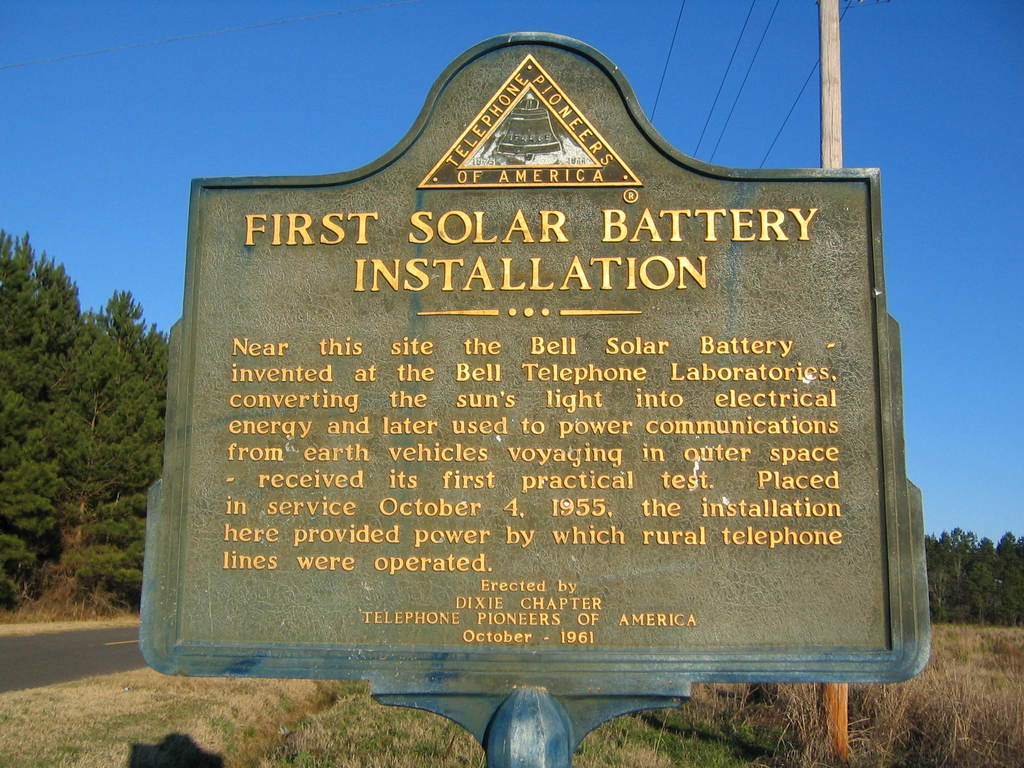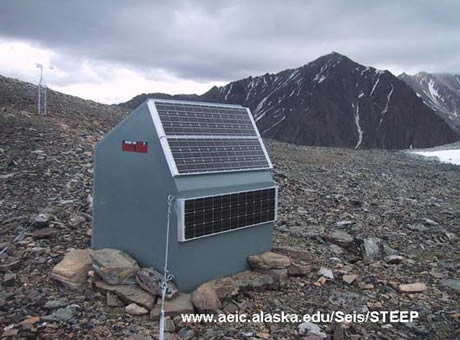
Ray Kurzweil famously advocates that we are racing towards grid parity for solar electricity at an accelerating pace. It is a race indeed. Hardly a day goes by without some major development or another (or another) pushing us one step closer to that goal.
There are many steps on the path behind us that place in this enviable position. But for now, let us turn our attention to a single special moment in that history.
On April 25, 1954, Bell Labs introduced the first commercial solar cell, or Solar Battery, as they then called it.
 It was a novelty at first, an invention without an application. Its a misconception today that solar has been uneconomical and falls just short of practicality. In fact, the history of photovoltaics is an unbroken chain of game changing killer applications.
It was a novelty at first, an invention without an application. Its a misconception today that solar has been uneconomical and falls just short of practicality. In fact, the history of photovoltaics is an unbroken chain of game changing killer applications.
 The first satellites were battery powered, and lasted only a few weeks. When solar cells were used instead of batteries, lifetime was extended to several years. Perhaps more than any other single technology, photovoltaic solar cells made satellites practical.
The first satellites were battery powered, and lasted only a few weeks. When solar cells were used instead of batteries, lifetime was extended to several years. Perhaps more than any other single technology, photovoltaic solar cells made satellites practical.
 Next, remote research facilities and laboratories that are not possible if they depend on battery or diesel generators become practical and economic when endowed with solar power. Similarly, solar powered oceanic and air traffic navigation and communication aids have spread safety and security to the remotest parts of the Earth.
Next, remote research facilities and laboratories that are not possible if they depend on battery or diesel generators become practical and economic when endowed with solar power. Similarly, solar powered oceanic and air traffic navigation and communication aids have spread safety and security to the remotest parts of the Earth.
Now photovoltaic power is poised to cap this string of marketplace victories and take its place as the central source or our power grid. We will see this drama unfold over the next decade.
So before we take that final lap in Kurzweil singular solar race, enjoy this peek back at the solar cells humble beginnings and wish that its inventors could have dreamt of its impact on our world.
There are many steps on the path behind us that place in this enviable position. But for now, let us turn our attention to a single special moment in that history.
On April 25, 1954, Bell Labs introduced the first commercial solar cell, or Solar Battery, as they then called it.
 It was a novelty at first, an invention without an application. Its a misconception today that solar has been uneconomical and falls just short of practicality. In fact, the history of photovoltaics is an unbroken chain of game changing killer applications.
It was a novelty at first, an invention without an application. Its a misconception today that solar has been uneconomical and falls just short of practicality. In fact, the history of photovoltaics is an unbroken chain of game changing killer applications. The first satellites were battery powered, and lasted only a few weeks. When solar cells were used instead of batteries, lifetime was extended to several years. Perhaps more than any other single technology, photovoltaic solar cells made satellites practical.
The first satellites were battery powered, and lasted only a few weeks. When solar cells were used instead of batteries, lifetime was extended to several years. Perhaps more than any other single technology, photovoltaic solar cells made satellites practical. Next, remote research facilities and laboratories that are not possible if they depend on battery or diesel generators become practical and economic when endowed with solar power. Similarly, solar powered oceanic and air traffic navigation and communication aids have spread safety and security to the remotest parts of the Earth.
Next, remote research facilities and laboratories that are not possible if they depend on battery or diesel generators become practical and economic when endowed with solar power. Similarly, solar powered oceanic and air traffic navigation and communication aids have spread safety and security to the remotest parts of the Earth.Now photovoltaic power is poised to cap this string of marketplace victories and take its place as the central source or our power grid. We will see this drama unfold over the next decade.
So before we take that final lap in Kurzweil singular solar race, enjoy this peek back at the solar cells humble beginnings and wish that its inventors could have dreamt of its impact on our world.

You ain't seen nothin' yet!
